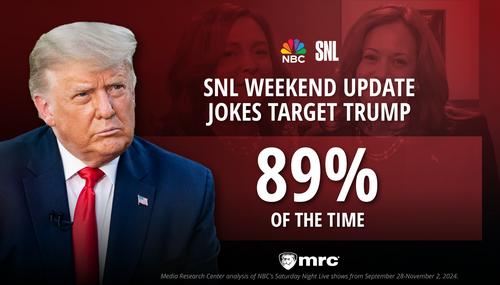Before the government released its first estimate of first-quarter economic growth in late April, the establishment press, particularly Bloomberg News and the Associated Press, salivated at the chance to report the then-predicted "robust" annualized growth of 3 percent and to describe how the economy had "accelerated" from the previous quarter's pathetic 0.4 percent. When that first estimate came in at only 2.5 percent, most news organizations at least had the integrity to pronounce the news disappointing. But not Martin Crutsinger and Christopher Rugaber at the AP, aka the Administration's Press, who opened their coverage by saying that "the American economy quickened its pace early this year despite deep government cutbacks."
The government's second estimate in May was little changed at 2.4 percent. But Wednesday's third and final estimate (pending annual revisions going back several years, the next of which will appear in July) came in at 1.8 percent, a 40 percent drop from so-called experts' original predictions (1.2-point difference divided by the original 3.0 percent). The AP's reaction was to produce a terse three-paragraph blurb which was gone from its national web site within 24 hours, followed by a late afternoon report which blamed higher Social Security taxes and "federal spending cuts":
First, here's the intial blurb (reproduced in its entirety for future reference, fair use and discussion purposes; bolds are mine throughout this post):
US economy grows at slower 1.8 percent rate in first quarter
The U.S. economy grew at an annual rate of 1.8 percent in the first three months of the year, significantly slower than first thought. The steep revision was mostly because consumers spent less, suggesting higher taxes are having a deeper impact on economic growth.
The Commerce Department revised the annual growth rate for the January -March quarter down from its last estimate of a 2.4 percent. The rate was still faster than the 0.4 percent rate in the October-December quarter.
Economists had thought growth in the April-June quarter would be 2 percent or less, although the revision will likely change those estimates. They had also expected growth to strengthen in the second half of this year.
The aforementioned Crutsinger and Rugaber appear to have remained silent during the rest of the day until after the closing bell. That report's main objective was to spin the reduced rate of growth as a reason why Ben Bernanke and the Federal Reserve would continue printing money out of thin air to buy government-issued debt for which there otherwise isn't sufficient demand. That's not how they framed it, of course:
SLOWER US GROWTH MIGHT LEAD FED TO DELAY TAPERING
The U.S. economy may not be strong enough for the Federal Reserve to slow its bond purchases later this year.
That's the takeaway from economists after the government cut its estimate Wednesday of growth in the January-March quarter to a 1.8 percent annual rate, sharply below its previous estimate of a 2.4 percent rate. The main reason: Consumers spent less than previously thought.
Most economists think growth will remain low as consumers and businesses continue to adjust to federal spending cuts and higher taxes. Growth is expected to reach an annual rate of only about 2 percent in the April-June quarter. Even if the economy improves slightly, it would be hard to meet the Fed's forecast of 2.3 percent to 2.6 percent growth for 2013.
... Some economists said the lower estimate suggests that an increase in Social Security taxes that took effect this year might be squeezing consumers more than expected. The tax increase has reduced take-home pay for most Americans.
The AP pair ignored the other key elements of the tax equation, namely that Congress and the President also raised the top marginal income-tax rate on high-earning Americans by 13 percent (the difference between the new rate of 39.6 percent and the old 35 percent; the impact is an estimated $620 billion over ten years [that excludes the Social Security tax increase]), and the ObamaCare-related increases in income and Medicare taxes which kicked in on January 1 (ten-year impact: $318 billion).
Based on recent history, these taxes have hurt the economy far more than the restoration of the Social Security payroll tax to its former level after a two-year, two-point reduction. The 2011 Social Security tax reduction was expected to have a significant Keynesian stimulative effect, and didn't; it's therefore reasonable to believe that its restoration has done little to hold back the economy compared to the income tax and ObamaCare hikes.
It should also not go unnoticed that Crutsinger and Rubager, in a classic double standard, chose to describe the repeal of the 2011 Social Security tax cut as a "tax increase," after they and most of their other establishment press colleagues spent the better part of the past decade describing the tax increase which would transpire if the Bush 43 tax cuts of 2001 and 2003 were to go away as "allowing tax cuts to expire."
Finally, no one anywhere is pointing out that 0.83 points of the reported 1.8-point annualized GDP increase (see Table 2 at link) came from farm inventories, which are only about ten percent of all inventories in the economy, and which barely grew during the quarter. That means all other factors grew the economy by less than an annualized 1 percent. I have not received, and don't expect a reply to a voice message left with the person at the government's Bureau of Economic Analysis who allegedly can explain that odd and very large contribution. But if that pickup reverses itself in the second quarter, things could get very ugly.
Thumbnail image created by Ed Driscoll of PJMedia.com, and used with permission.
Cross-posted at BizzyBlog.com.




